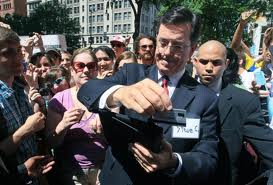 After last week’s focus on donors and what they have to say about their charitable contributions, I’ve decided to change the focus and ask volunteer solicitors to talk about their most rewarding solicitation experience and what needs to happen to keep them involved next year. Similar to last week, this week’s respondents answered an anonymous online survey that they learned about on various social media channels and from blast emails. I’ve picked four really awesome responses to share with you this week that I think provide excellent lessons for non-profit and fundraising professionals. Enjoy!!!
After last week’s focus on donors and what they have to say about their charitable contributions, I’ve decided to change the focus and ask volunteer solicitors to talk about their most rewarding solicitation experience and what needs to happen to keep them involved next year. Similar to last week, this week’s respondents answered an anonymous online survey that they learned about on various social media channels and from blast emails. I’ve picked four really awesome responses to share with you this week that I think provide excellent lessons for non-profit and fundraising professionals. Enjoy!!!
Again … the survey was anonymous because I wanted the truth, the whole truth and nothing up the truth. Here is what the today’s highlighted survey respondent said:
Question: Using the comment box below, please write a paragraph or two about your most rewarding solicitation experience (e.g. when you sat down eyeball-to-eyeball with someone else and asked them to consider making a charitable contribution). Why was it so rewarding for you? How did you feel going into the meeting? And what made you feel comfortable enough with doing such a solicitation?
Answer: I don’t know if I have ever felt that making the actual ask was rewarding. Getting a check in hand feels rewarding. On the other hand, having someone not give you money is just as deflating. I think the feeling you get from having a face-to-face solicitation is not immediately rewarding. I believe it is when you “put it [the ask] in perspective” that you can feel rewarded. You went out there and stood up for something you believed in. If you can capture that feeling I think that is reward enough. As far as what makes you feel comfortable. It is the relationship with the person you are soliciting. The better the relationship, the easier it is to solicit.
Question: Understanding you are probably a very busy person, what does the charity that you’ve made some solicitation calls for need to do (or show you) in order to renew your commitment as a volunteer solicitor in the next fundraising campaign?
Answer: I think that the organization just needs to understand the challenge of asking people for money. I think it needs to be careful not too lean on people too heavily. Think of each volunteer differently, account for what might make certain asks hard. I think ultimately you want someone to appreciate you and the fact that you are really putting yourself out there.
OK … unlike last week when I couldn’t resist weighing in with my thoughts, I’m going to take a risk and ask YOU to weigh-in and share what you think the moral to the story is. And the risk I’m referring to is . . . no one is going to comment and all anyone will hear is the sound of crickets. Please use the comment box below and remember that we can all learn from each other. I also encourage you to share links to resources that you’ve found on the internet.
Here is to your health!
Erik Anderson Owner, The Healthy Non-Profit LLC eanderson847@gmail.com http://twitter.com/#!/eanderson847 http://www.facebook.com/eanderson847 http://www.linkedin.com/in/erikanderson847







